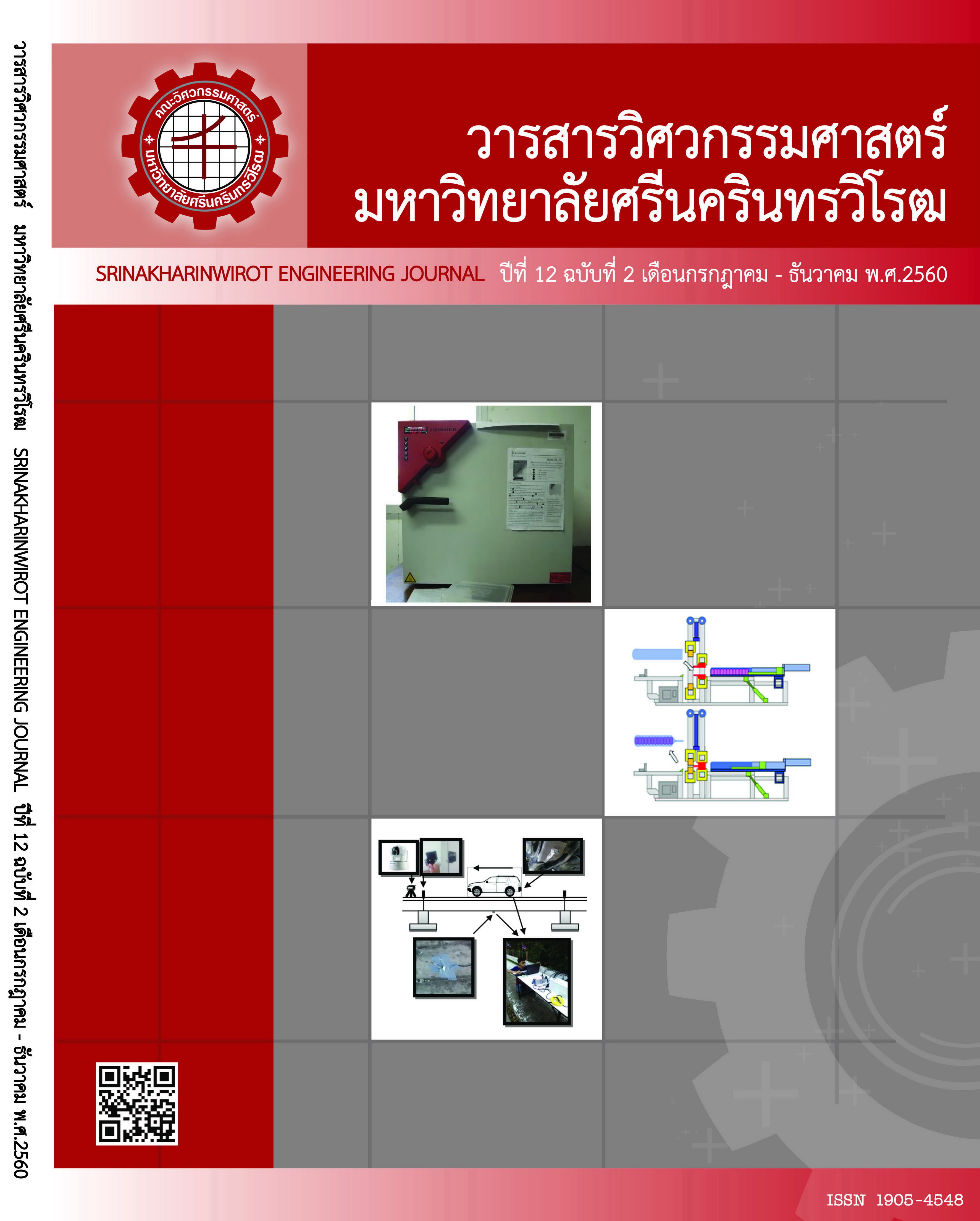Determining the Corresponding Equations between Ejector Performance and Operating Conditions and Ejector Geometries by Using Response Surface Methodology
Main Article Content
Abstract
This study is to investigate the effect of variously important parameters on an ejector performance in steam ejector refrigeration system. The parameters are the operating conditions which are boiler and evaporator temperature and ejector geometries which are area ratio (AR) and area of throat ratio (ATR). Computational fluid dynamics (CFD) is employed to examine such effects with statistical research matrix design called Central Composite Design (CCD). The regression equation of relationships between parameter and ejector performance being entrainment ratio (Rm) and critical back pressure (CBP) are determined by using the response surface methodology (RSM). From simulation results, RSM analysis indicates that the operating conditions and ejector geometries have the significant effect on ejector performances. Furthermore, the quadratic model being properly with reliability above 95%. However, critical back pressure values given from the regression is slightly deviated because some parameters are not considered in this study.
Article Details
Copyright belongs to Srinakharinwirot University Engineering Journal
References
[2] J. H. Keenan and E. P. Neumann, “A simple air ejector,” Transactions of the ASME Journal of Applied Mechanics, vol. 64, pp. 75-81, 1942.
[3] J. H. Keenan, E. P. Neumann and F. Lustwerk, “An investigation of ejector design by analysis and experiment,” Transactions of the ASME Journal of Applied Mechanics, vol. 72, pp. 299 – 309, 1950.
[4] J. T. Munday and D. F. Bagster, “A new theory applied to steam jet refrigeration,” Industrial & Engineering Chemistry Process Design and Development, vol. 16(4), pp. 442-449, 1997.
[5] S. B. Riffat and S. A. Omer, “CFD modeling and experimental investigation of an ejector refrigeration system using methanol as the working fluid,” International Journal of Energy Research, vol. 25, 115-128, 2001.
[6] K. Pianthong, W. Seehanam, M. Behnia, T. Sriveerakul and S. Aphornratana, “Investigation and improvement of ejector refrigeration system using computational fluid dynamics technique,” Energy Conversion and Management, vol. 48, pp. 2556–2564, 2007.
[7] T. Sriveerakul, S. Aphornratana and K. Chunnanond, “Performance prediction of steam ejector using computational fluid dynamics: Part 1. Validation of the CFD results,” International Journal of Thermal Sciences, vol. 46, pp. 812–822, 2007.
[8] T. Sriveerakul, S. Aphornratana and K. Chunnanond, “Performance prediction of steam ejector using computational fluid dynamics: Part 2. Flow structure of a steam ejector influenced by operating pressures and geometries,” International Journal of Thermal Sciences, vol. 46, pp. 823–833, 2007.
[9] G. Besagni, R. Mereu and F. Inzoli, “Ejector refrigeration: A comprehensive review,” Renewable and Sustainable Energy Reviews. Vol. 53, pp. 373-407, 2016.
[10] N. Ruangtrakoon, S. Aphornratana, and T. Sriveerakul, “Experimental studies of a steam jet refrigeration cycle: Effect of the primary nozzle geometries to system performance,” Experimental Thermal and Fluid Science, vol. 35, pp. 676–683, 2011.
[11] K. Chunnanond. and S. Aphornratana “An experimental investigation of a steam ejector refrigerator: the analysis of the pressure profile along the ejector,” Applied Thermal Engineering, vol. 24,pp.311-322, 2004.


